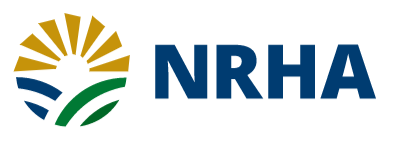Hidden dollars: A rural hospital’s guide to financial survival
Rural hospitals across the country are facing significant financial challenges, with more than 70 percent of critical access hospitals operating at a loss. This alarming statistic from the American Hospital Association underscores the urgent need for financial optimization. Revenue cycle management (RCM) offers a crucial path toward sustainability, helping hospitals uncover hidden revenue opportunities and strengthen their financial footing.
Strategic pricing for financial stability
Many hospitals implement yearly across-the-board fee increases, but a more strategic pricing approach can yield better results. By analyzing peer fee schedules and assessing local market sensitivities, hospitals can refine pricing strategies to optimize revenue.
Rather than applying uniform price increases, hospitals should consider a more data-driven approach that evaluates service-specific demand and payer reimbursement trends. Some services may support higher price adjustments due to their reimbursement potential, while others may require more conservative changes to remain competitive. Additionally, understanding local economic factors can ensure that pricing adjustments align with community affordability, preventing potential reductions in patient volume due to financial barriers.
Advanced software tools allow hospitals to simulate the previous year’s activities and provide tailored recommendations, ensuring that price adjustments capitalize on higher outpatient commercial reimbursement potential while avoiding unnecessary increases in less impactful areas. In addition to revenue optimization, strategic pricing can improve relationships with payers by demonstrating a commitment to fair and justifiable pricing.
Charge capture optimization: The key to revenue integrity
Charge capture is a critical component of hospital revenue integrity. A well-structured charge capture process ensures that hospitals correctly document and bill for all services provided. Without robust charge capture mechanisms, hospitals risk losing substantial revenue due to overlooked or inaccurately coded services.
To address these challenges, hospitals must implement rigorous review protocols that assess charge accuracy at multiple levels. Routine audits combined with automated flagging systems can help detect missing charges before claims are submitted. Staff training is also essential—many charge capture discrepancies stem from inconsistent workflows or misunderstandings about proper documentation requirements. By integrating technology with human expertise, hospitals can streamline their billing processes and ensure accurate reimbursement for services provided.
Unbilled services: A hidden source of revenue
It is estimated that 1.5 to 2 percent of hospital claims miss capturing services that were actually provided. For small critical access hospitals, this could mean managing 15 to 25 different initiatives to recapture lost revenue. Larger hospital systems face even greater complexity.
Common sources of unbilled services include procedures performed but not documented, ancillary services that are omitted from the final bill, and coding errors that prevent reimbursement. Hospitals should develop systematic processes to identify these gaps, including routine charge reconciliation and retrospective audits of claims data. In some cases, partnering with revenue integrity specialists can help uncover hidden revenue opportunities and improve billing compliance.
By implementing tailored initiatives, hospitals can improve billing accuracy, ensure proper documentation, and significantly enhance annual revenue. A systematic approach to identifying these gaps can transform financial performance without additional burden on clinical teams. This proactive approach also fosters transparency and trust among patients and payers, reinforcing the hospital’s commitment to accurate billing practices.
Addressing root causes in billing discrepancies
Hidden gaps in hospital billing processes often stem from inconsistent charge capture methods. A thorough assessment can identify discrepancies, revealing why certain services are missed in claims submission. The solution lies in not only identifying but also resolving these issues at the root cause level.
Hospitals can take several steps to address these root causes:
- Conduct frequent audits of clinical documentation to ensure all billable services are recorded.
- Implement structured charge capture protocols to standardize data entry and minimize human error.
- Train billing and coding staff on the latest payer requirements to reduce claim denials related to missing or incorrect information.
Charge capture for limited-bandwidth hospitals
Critical access hospitals frequently operate with limited resources, making it difficult to dedicate staff to charge capture optimization. A successful strategy involves not just IT and analytics support but also a hands-on approach that alleviates operational burdens. By revamping clinical workflows and integrating best practices, hospitals can improve financial outcomes while freeing up staff to focus on patient care rather than administrative bottlenecks.
Smaller hospitals may benefit from outsourcing certain revenue cycle functions to specialized teams that can provide ongoing support without straining internal resources. Technology solutions that automate charge reconciliation and flag potential errors can also be valuable in reducing administrative workload and improving financial performance.
The contingency-based model for revenue growth
Many hospitals struggle with IT bandwidth and budget constraints when considering financial optimization strategies. A contingency-based approach removes these barriers by structuring payment around realized revenue improvements.
This model ensures that hospitals only pay for services that generate measurable financial benefits. It aligns vendor incentives with hospital success, fostering a collaborative approach to revenue optimization. Case studies reveal that hospitals leveraging this model consistently see revenue increases exceeding 120 percent of projected targets, demonstrating its effectiveness in driving sustainable financial success.
Proactive revenue recovery: Shifting from rebills to prevention
For many hospitals, rebilling claims is a top priority when addressing revenue leakage. However, a more effective approach is to shift from reactive rebilling to proactive issue resolution. By identifying and rectifying underlying claim submission errors before they occur, hospitals can prevent revenue losses and ensure timely and accurate reimbursement.
Proactive strategies include:
- Implementing automated claim scrubbing tools to detect errors before submission.
- Enhancing training programs for billing staff to reduce common documentation mistakes.
- Establishing clear communication channels between clinical teams and revenue cycle staff to prevent charge capture oversights.
This strategy streamlines financial operations and enhances long-term revenue cycle efficiency, helping hospitals avoid unnecessary rework and cash flow disruptions.
Leveraging training libraries for RCM improvement
The health care revenue cycle landscape is constantly evolving, requiring hospitals to adapt to new challenges. Implementing a comprehensive training video library provides a sustainable foundation for ongoing learning and optimization.
By equipping staff with educational resources, hospitals can enhance organizational agility, improve charge capture processes, and foster a culture of continuous improvement. This proactive approach mitigates uncertainty, ensuring that teams consistently perform at their highest level. Hospitals should also consider incorporating competency assessments and feedback mechanisms to reinforce training effectiveness and identify areas for additional education.
The financial future of rural hospitals depends on their ability to optimize revenue cycle processes. By implementing strategic pricing, improving charge capture, identifying unbilled services, addressing billing discrepancies, and leveraging contingency-based models, hospitals can unlock significant financial opportunities.
A proactive approach to revenue cycle management is essential to maintaining operations, ensuring sustainability, and continuing to provide critical health care services to rural communities. Through a combination of technology, training, and strategic process improvements, rural hospitals can enhance their financial stability and improve patient care outcomes.
NRHA adapted the above piece from Ni2 Health, a trusted NRHA partner, for publication within the Association’s Rural Health Voices blog.
 | About the author: Taylor Searfoss serves as vice president of business development at Ni2 Health, a hospital division of Infinx, where he leverages extensive experience in health care administration, sales strategy, and revenue cycle management. He began his career in hospital-based revenue cycle operations before transitioning to the business partner sector, where he has continued to drive value for health care organizations through innovative solutions and strategic collaboration. He is a Fellow of the Healthcare Financial Management Association (HFMA) and holds a master of science degree in public health, healthcare administration from Meharry Medical College. He also serves as the current chapter president for the South Carolina HFMA chapter. |
